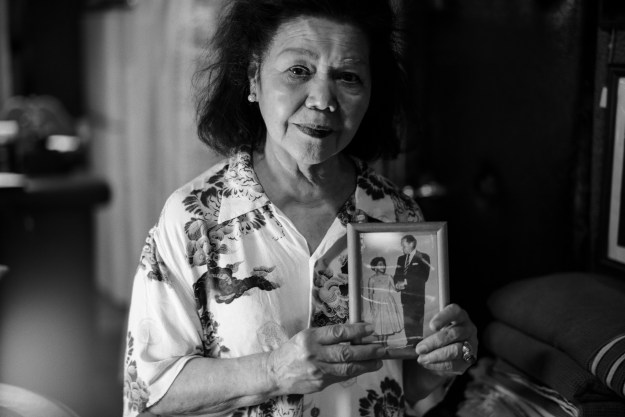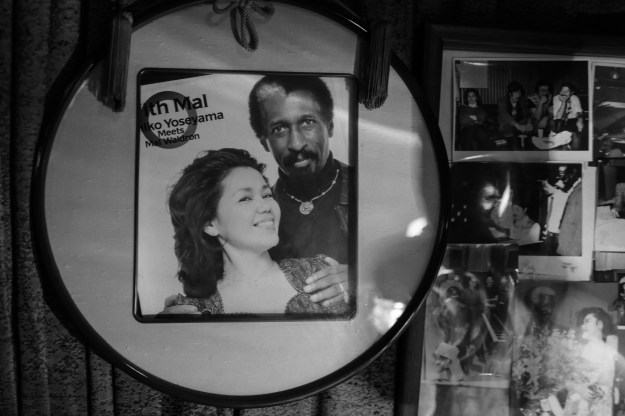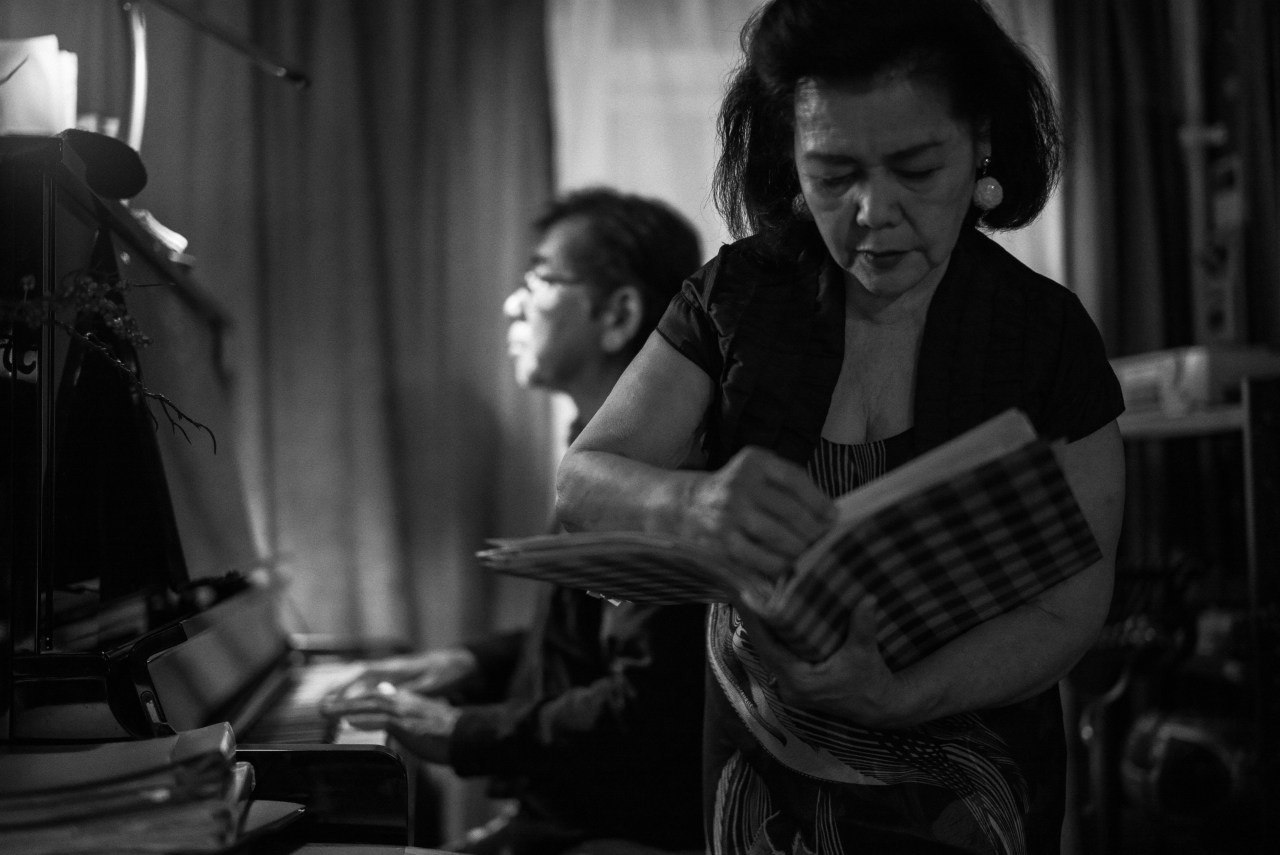Music lounge Interlude is only a short taxi ride from the chaos of Kokusaidori street, Naha’s main tourist thoroughfare, but it might as well be another world. Located above a cafe on a nondescript street is a worn, padded door sporting the hand-lettered sign “Interlude” and marked with a fleur-de-lis. Inside, amid stacks of old photos, records, and other memorabilia, singer and bar owner Sumiko Yoseyama oversees a portal to a bygone era: the 1950s, during the post–World War II American military occupation of Okinawa.
Yoseyama’s bar reflects her nostalgia for this period—for falling in love with big-band music over the armed forces radio and later performing at bases around the island. Decades later Okinawan life remains profoundly influenced by American culture, despite the islanders’ conflicted and often contentious relationship with the U.S. A&W root beer stands, army-navy stores, and American-style steak restaurants line Kokusaidori, serving both Asian tourists and American military personnel. Meanwhile Okinawans continually protest the ongoing U.S. military presence on the island.

Outside a bookstore a poster reads “No Rape! No Osprey! No U.S. Bases!” It’s a reference to a number of sexual assaults by U.S. servicemen and to the controversial American Osprey aircraft, a symbol to many locals of the burden of a foreign-military presence. Below the poster another banner welcomes Americans but not Japanese. At one food stand serving the Okinawan fusion food taco rice, the proprietor wore an apron that proudly proclaims “F*** You, We’re From Okinawa.” A few blocks away, in the maze that is the Makishi Public Market, loudspeakers alternate between playing traditional Ryukyu sanshin music and the New Orleans jazz standard “When the Saints Go Marching In.”
Despite the pervasive political tension, Yoseyama shies away from questions about protests in the 1970s or the resistance to the U.S. presence on the islands. She wants to talk about the music.
Yoseyama was born 77 years ago on Kohama, a tiny island close to Taiwan. Her family came to Naha during the lean years, just after the end of the Second World War and at the beginning of the American occupation. As an adolescent, she was drawn to music on the armed forces radio, specifically the songstress Doris Day. Both her teachers and parents encouraged her talent, and by her early teens she was performing with the working bands that plied their trade at various bases and officers’ clubs around the island.
Rather than simply viewing the Americans as occupiers, Yoseyama saw her love of foreign music as common ground. “In Okinawa,” she says, “because the Americans were just living next door basically, we had more exposure and it was easier for people to get interested in their music. It broadened my perspective.” She learned English through song and soon became one of the top acts on the base circuit, performing with the megastars of the era, like Bob Hope, and receiving invitations to tour in the U.S. (Though she continues to tour throughout Japan, she never made it to the U.S.)


But the big-band music that Yoseyama loved had lost out to rock ‘n’ roll by the mid 1960s. Elvis and the Beatles crowded out classic ballads like “Summertime” and “Tennessee Waltz.” The Vietnam War also brought a different feel to the island. Tensions rose, as did resentment of the U.S. military presence. In 1970 the Koza Riot brought 5,000 Okinawans into direct physical conflict with American military police near Kadena Air Base. Finally, in 1972, Okinawa was returned to Japan. The U.S. dollar was replaced by the yen with little account for the difference in exchange rate. The reduction in purchasing power hit the island hard. At that very moment, with musical tastes changing and little work available on the bases, Yoseyama and her husband opened Interlude, a place where the music she loved would be forever welcome.
Forty-five years later, Sumiko Yoseyama is still performing, though she’s down to three nights a week and the sets are shorter. She lights up as she shows me the four albums she recorded beginning in the early 1980s, including two with legendary jazz pianist Mal Waldron (famous for his work with luminaries like Charles Mingus and John Coltrane and as an accompanist for Billie Holiday until her death in 1959).

The bar itself feels like a time capsule, brimming with history and wallpapered with photos of a young woman onstage with various bands, posing with Bob Hope and performing in Tokyo. All the while a Tony Bennett album plays in the background.
We are joined by Hidehumi Kamura, who will accompany her on the piano. They’ve been performing together for more than 40 years, and she describes him as the best jazz pianist in Okinawa.
It turns out to be an especially quiet night. There are only three patrons in the bar when Yoseyama and Kamura take the stage. She sings with power and finesse, only barely using the microphone for amplification, though her voice borders on fragile at times. They play like two old friends sharing a memory.